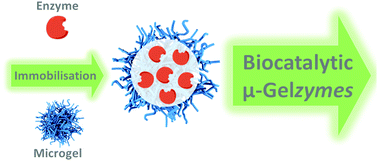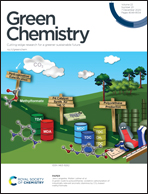Biocatalytic microgels (μ-Gelzymes): synthesis, concepts, and emerging applications†
Abstract
Enzymes are nature's catalysts and have great potential for sustainable processes from renewable resources. The adaptation of enzymes to the requirements of industrial processes is a prerequisite to harness their benefits in large-scale transformations for the synthesis of fine chemicals, food products, and pharmaceuticals. Immobilisation of wild-type or engineered enzymes using natural and synthetic carriers has been extensively employed to improve catalytic performance, ensure recovery and reuse, and thereby promote their use in industrial processes. Over the past three decades, significant progress has been achieved in the design and application of immobilised enzymes. Microgels as containers for protein immobilisation are advancing into a promising alternative as reflected by a growing body of literature that documents their use in sustainable catalytic processes. Microgels are crosslinked submicron-sized colloidal polymer networks and in this review, we summarise the progress in the synthesis and applications of enzyme-loaded microgels (μ-Gelzymes). We start by exploring the different approaches used for enzyme immobilisation on or within microgels and give representative examples for the use of μ-Gelzymes in different applications. Subsequently, the potential of μ-Gelzymes in achieving sustainable catalysis is discussed from a green chemistry perspective. Finally, we draw future directions for further improvement of biocatalytic μ-Gelzymes as an emerging interdisciplinary research field of interactive soft matter.



 Please wait while we load your content...
Please wait while we load your content...